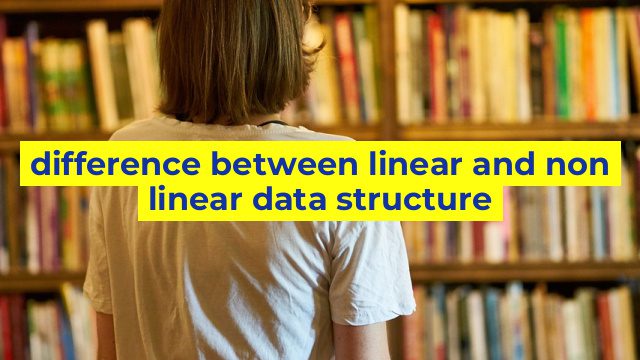The Difference between Linear and Non-Linear Data Structure
When it comes to data structures, there are two primary types: linear and non-linear. The main difference between linear and non-linear data structures lies in how they store and organize data. In this article, we will explore the differences between these two types of data structures.
Linear Data Structure
A linear data structure stores and organizes data in a sequential manner. This means that each element in the structure has a direct relationship with its predecessor and successor. The elements are arranged one after the other, which makes it easy to access them in a specific order.
There are several types of linear data structures, including arrays, stacks, queues, and linked lists. Arrays and linked lists are commonly used for storing and accessing large amounts of data. Stacks and queues are used for managing collections of data that need to be processed in a specific order.
Non-Linear Data Structure
Non-linear data structures, on the other hand, store and organize data in a way that does not follow a sequential pattern. The elements in a non-linear data structure may have more than one direct predecessor or successor. This makes it difficult to access all the elements in the structure in a particular order.
Some of the most common types of non-linear data structures are trees and graphs. In a tree structure, each element has only one direct predecessor or parent. A tree structure can be used to represent hierarchical relationships between data, such as the structure of a family tree or the organization of files on a computer.
In a graph structure, each element can have multiple predecessors and successors. A graph can represent complex networks of relationships between data, such as social networks or transportation networks.
Conclusion
In summary, the main difference between linear and non-linear data structures is the way in which they store and organize data. Linear data structures have a sequential pattern of elements, while non-linear data structures may have more than one direct predecessor or successor. Choosing the right data structure for a given task is essential for efficient data management and processing.
Table difference between linear and non linear data structure
| Linear Data Structure | Non-linear Data Structure |
|---|---|
| Elements in a linear data structure are arranged in a linear sequence, meaning each element has only one predecessor and one successor. | Elements in a non-linear data structure are not arranged in a linear sequence, but rather they have multiple predecessors and/or successors. |
| Examples of linear data structures include arrays, linked lists, stacks, and queues. | Examples of non-linear data structures include trees, graphs, and heaps. |
| Linear data structures have a relatively simple organization, and their traversal is straightforward and easy to implement. | Non-linear data structures have a more complex organization, and their traversal may require more sophisticated algorithms. |
| Linear data structures are typically used when the data needs to be accessed in a sequential manner, such as in sorting or searching algorithms. | Non-linear data structures are typically used when the data has a hierarchical or relational structure, such as in database management or network routing. |

